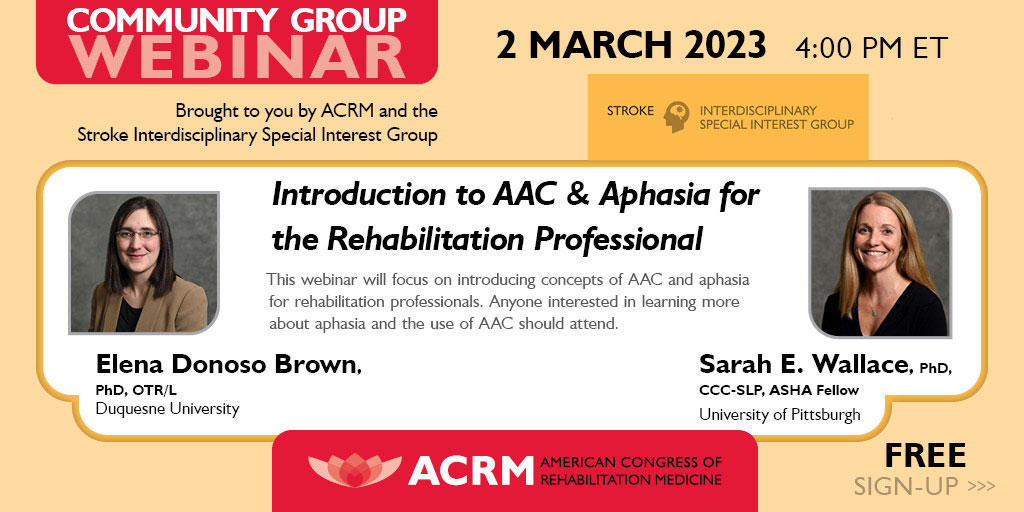Stroke ISIG Virtual Happy Hour
Introduction to AAC and Aphasia for the Rehabilitation Professional
With guest speaker, Sarah E. Wallace, PhD, CCC-SLP, ASHA Fellow and Elena Donoso Brown, PhD, OTR/L
This webinar will focus on introducing concepts of AAC and aphasia for rehabilitation professionals. Anyone interested in learning more about aphasia and the use of AAC should attend.
LEARNING OBJECTIVES
Upon completion of the webinar, learners will be able to:
- Define augmentative and alternative communication
- List three strategies to support expression in people with aphasia
- List three strategies to support comprehension in people with aphasia
ABOUT SARAH E. WALLACE
Sarah E. Wallace, PhD, CCC-SLP, ASHA Fellow, is professor and director of the master’s program in Speech-Language Pathology at the University of Pittsburgh in the Communication Science and Disorders Department. Her primary academic responsibilities involve leading and teaching in the Speech-Language Pathology program and participating in clinical education. As an established investigator, Wallace is a member of the Pittsburgh Translational Aphasia Research Initiative (PTARI). The multi-investigator research team’s mission is to enhance and accelerate progress in translational aphasia research and brings together significant strengths in care for individuals with aphasia. Her research lab – the Communication and Cognition Lab recently has examined topics related to reading and aphasia, friendship, and home program development for people post-stroke.
ABOUT ELENA DONOSO BROWN
Elena Donoso Brown, PhD, OTR/L is an associate professor at Duquesne University in their Occupational Therapy Department. Her clinical background is with individual post-stroke and traumatic brain injury during the acute phase of recovery. She has developed a research agenda around understanding and assessing ways to optimize the implementation of home programs for persons with acquired brain injury to increase adherence and improve outcomes. In addition, Dr. Donoso Brown teaches students in the program’s professional and advanced professional phases on evaluation/assessment, biomechanical intervention, and program development.




